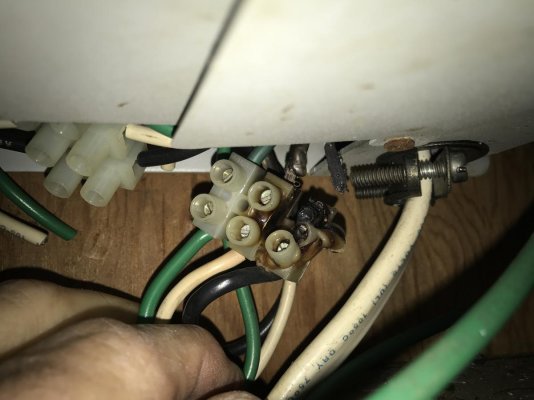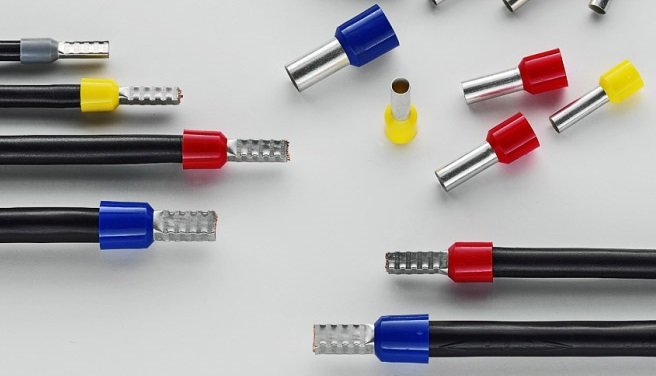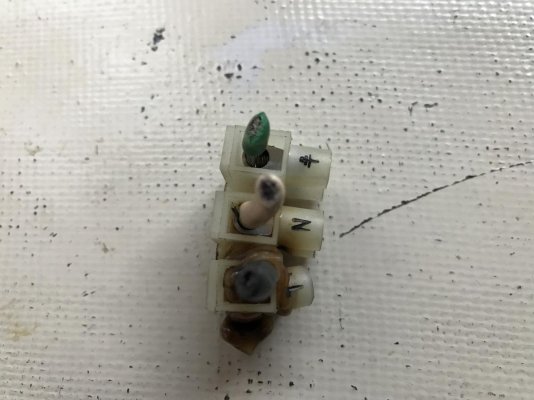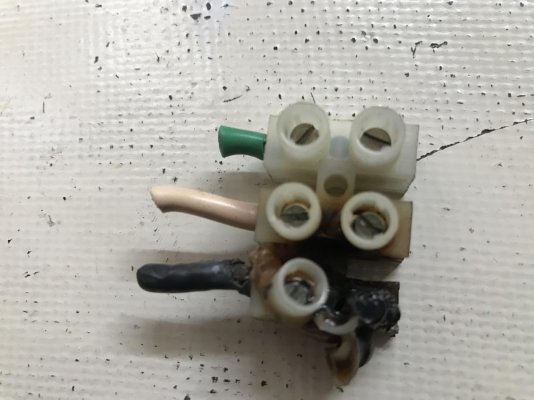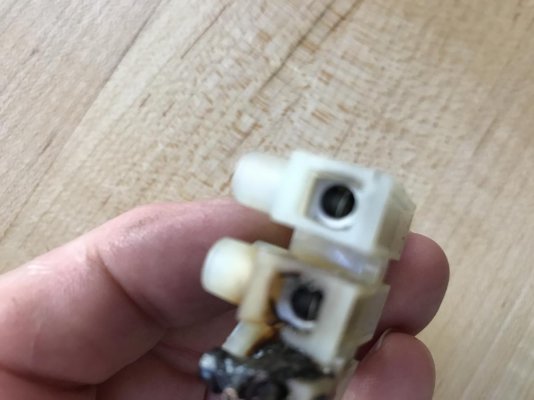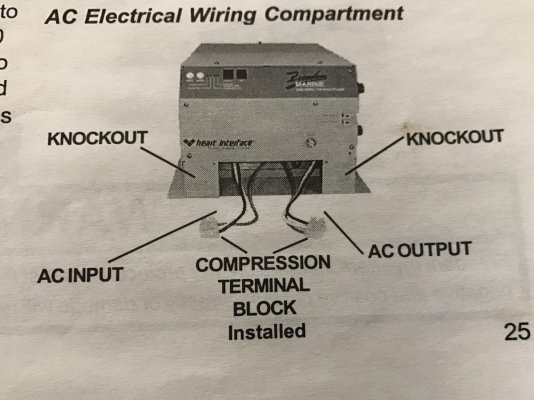Pack Mule
TF Site Team
- Joined
- Jan 24, 2013
- Messages
- 3,749
- Location
- USA
- Vessel Name
- Slo-Poke
- Vessel Make
- Jorgensen custom 44
Went out to check on boat today and noticed I didn't have any 110 volt power . The charger was on in the inverter and I showed having 30 amps from shore power but no 110 at my breaker box . I tracked it down to this connection inside the inverter . Would a butt connector be better here or should I go back with the same ? We were lucky we had no serious fire .

